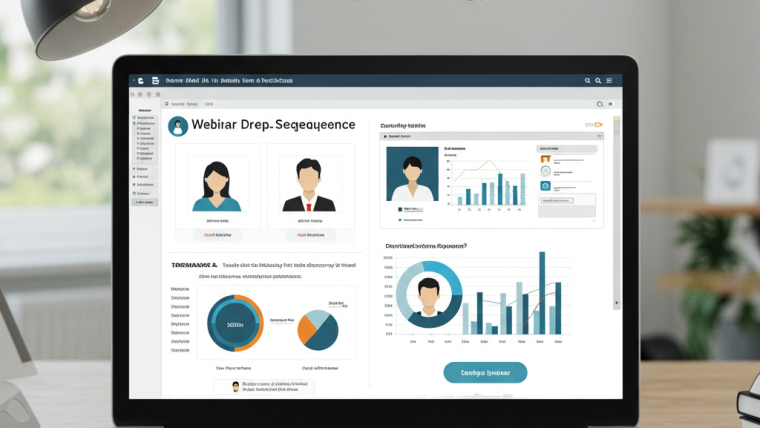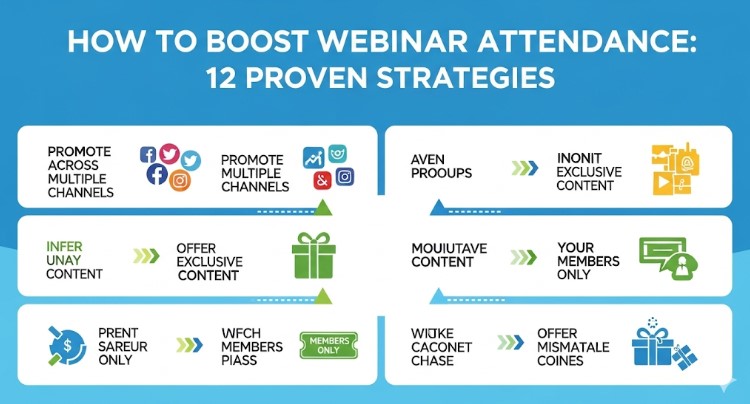The Early Days
Remember when attending a seminar meant booking flights, reserving hotel rooms, and spending days away from the office? I sure do. Those were the days before webinars transformed how we share knowledge and connect professionally.
The story of webinars doesn’t begin with a bang but rather a slow technological crawl in the late 1980s. Computer scientists and forward-thinking companies started experimenting with ways to share screens and present information remotely. These weren’t anything like what we’d recognize today – they were clunky, expensive, and required technical expertise that most organizations simply didn’t have.
I first encountered these early systems during my time at a tech company in the mid-90s. The setup took hours, connections dropped constantly, and the audio quality was terrible. Yet despite these frustrations, you could sense something revolutionary was happening. We were witnessing the birth of a new communication medium.
Naming a Revolution
The term “webinar” didn’t pop up overnight. For years, these online gatherings went by various names – web conferences, online seminars, virtual presentations. It wasn’t until around 1998 that “webinar” (that clever blend of “web” and “seminar”) started gaining traction.
The early 2000s brought real progress. Companies like WebEx and PlaceWare began offering more reliable platforms that businesses could actually use without needing an IT team on standby. I remember hosting my first “proper” webinar in 2002 – 25 people somehow managed to join, and despite some technical hiccups, the potential was undeniable.
These early webinars were pretty basic by today’s standards. Think static PowerPoint slides with a disembodied voice explaining each bullet point. Interaction? Limited to typing questions that the presenter might or might not see. Not exactly riveting stuff, but it got the job done and saved everyone the hassle of travel.
Breaking Through Bandwidth Barriers
The mid-2000s changed everything. As broadband internet spread to offices and homes across the world, webinars began to transform. Suddenly, video became feasible. Audio quality improved dramatically. And most importantly, platforms started adding features that made webinars genuinely interactive.
By 2007, I was regularly attending webinars that included live polling, Q&A sessions, and even breakout rooms. The technology wasn’t perfect – “Can everyone hear me?” became the unofficial catchphrase of webinar hosts everywhere – but the experience was worlds away from those early days.
This period saw webinars break out of their corporate confines. Educational institutions started offering virtual classes. Marketers realized webinars could generate leads and nurture prospects. Thought leaders discovered they could reach global audiences without leaving their desks.
Specialization and Growth
Between 2008 and 2012, the webinar landscape exploded with options. No longer was it one-size-fits-all. Need something simple for internal training? There’s a platform for that. Looking for advanced marketing analytics? Several companies had you covered.
I worked with a software company during this period that completely revolutionized their sales process using webinars. Rather than flying sales reps around the country for in-person demos, they created a series of targeted webinars. Their reach quadrupled while their travel budget shrank to almost nothing. The ROI was staggering.
For marketers especially, webinars became gold mines of engagement data. Who attended? How long did they stay? Which slides captured attention? Which lost it? This information proved invaluable for understanding audience interests and following up with relevant content.
Going Mobile, Moving to the Cloud
Around 2010, two major shifts happened simultaneously. First, smartphones became powerful enough to handle webinar participation. Second, cloud computing eliminated the need for downloaded software and local processing power.
These changes democratized webinars in ways previously unimaginable. A sales rep could join a training webinar from an airport lounge. A student could attend a lecture from a café. A CEO could deliver a company address to thousands of employees scattered across continents – all from their tablet while traveling.
I recall a particular webinar I joined while stuck in traffic (as a passenger, I should add!). Five years earlier, this would have meant missing the event entirely. Instead, I simply pulled out my phone and participated as if I were at my desk. That moment really drove home how profoundly things had changed.
From Function to Experience
By 2016, the technical challenges of webinars had largely been solved. The new frontier became user experience. How could hosts keep audiences engaged when digital distractions were just a click away?
Innovative companies responded with more dynamic formats. Gone were the days of 60-minute monologues. Successful webinars now featured multiple presenters, varied content types, and interactive elements spaced strategically throughout the event.
Production values increased dramatically too. I attended a product launch webinar in 2017 that honestly rivaled broadcast television in quality. Professional lighting, multiple camera angles, slick graphics – it was clear that organizations were taking this medium seriously and investing accordingly.
This was also when professional livestreaming services began raising the bar for what virtual events could be. The best webinars started feeling less like conference calls and more like immersive, shared experiences.
The Pandemic Pivot
Nobody could have predicted how 2020 would catapult webinars from useful business tool to essential communication lifeline. When COVID-19 shut down in-person gatherings worldwide, webinars weren’t just nice to have – they became the only way for many organizations to connect with audiences.
This unprecedented demand pushed the technology forward at warp speed. Platforms that had been gradually improving for years suddenly implemented changes in weeks. Stability improved. User interfaces became more intuitive. Features that had been on development roadmaps for future releases got fast-tracked.
I remember the chaos of those early pandemic months. Organizations that had never considered virtual events were suddenly hosting webinars weekly. People who could barely navigate email were becoming Zoom experts overnight. It wasn’t always pretty, but it was remarkable to witness this mass digital adaptation.
Today’s Webinar World
Fast forward to today, and webinars have become so integrated into our professional lives that we hardly think about the technology anymore. Modern platforms offer HD video, crystal-clear audio, seamless interactivity, and analytics that would have seemed like science fiction to those early webinar pioneers.
The diversity of webinar types has exploded too. Product demonstrations, thought leadership panels, educational courses, virtual conferences – all these and more have found their place in the webinar ecosystem.
Perhaps most interesting is how AI is transforming the webinar experience. Real-time transcription, automated follow-ups, personalized content recommendations – these tools are making webinars more accessible and effective than ever before.
What’s Next for Webinars?
So where do webinars go from here? Based on current trends, I see several exciting possibilities on the horizon.
Virtual reality webinars are already being tested by forward-thinking organizations. Imagine putting on a headset and feeling like you’re actually sitting in a room with presenters and attendees from around the world. The technology isn’t quite mainstream yet, but it’s coming faster than you might think.
Hyper-personalization will likely transform how we experience webinars too. Instead of everyone seeing the same presentation, content could adapt in real-time based on your role, interests, or previous interactions. The webinar you experience might be subtly different from the one your colleague sees, even though you’re attending the same event.
One thing seems certain – webinars aren’t going anywhere. They’ve become too valuable, too ingrained in our professional communication landscape. What will change is how naturally they integrate into our workflows and how effectively they facilitate genuine connection despite physical distance.
As webinars evolved, so did their monetization models — here’s a full breakdown of how webinars make money today.
Looking Back, Moving Forward
When I think about how far webinars have come – from those frustrating, glitchy experiments of the 1990s to today’s sophisticated virtual experiences – I’m struck by how this evolution reflects our broader relationship with technology.
At their best, webinars solve real human problems. They save time and money. They expand access to information. They connect people who otherwise couldn’t connect. Yet they’ve succeeded not by replacing human interaction but by finding new ways to facilitate it across digital spaces.
The history of webinars isn’t just about technological advancement – it’s about our persistent desire to share knowledge, to learn from each other, to feel connected even when physically apart. As webinars continue to evolve, that fundamental human element will remain their greatest strength.








Webinar Analytics: A Complete Guide to Measuring Success and Improving Performance
The Ultimate Webinar Follow-Up Strategy to Turn Attendees into Customers
Webinar Accessibility Best Practices: How to Make Your Online Events Inclusive for All
Webinar Personalization: Tailoring Content to Audience Segments for Maximum Engagement